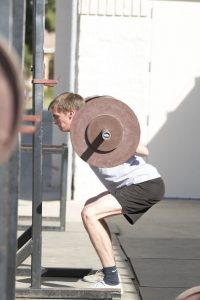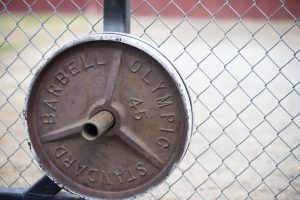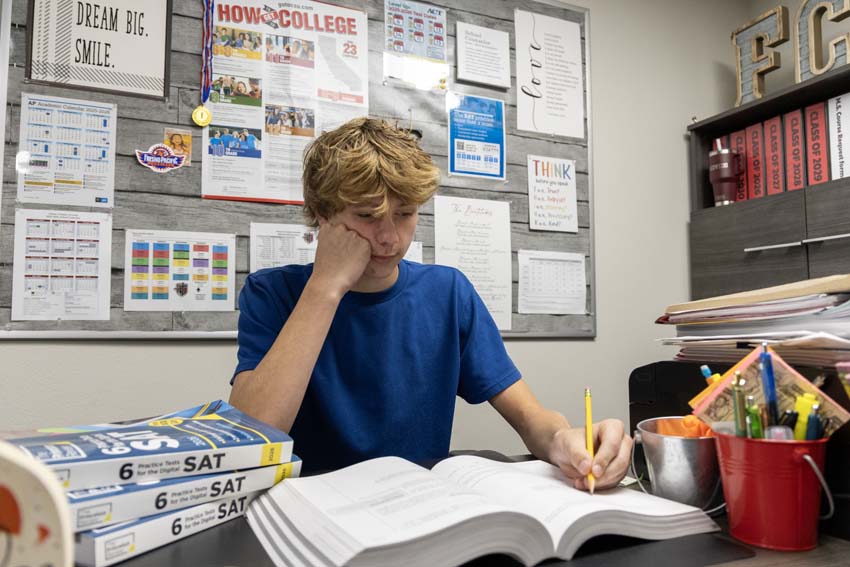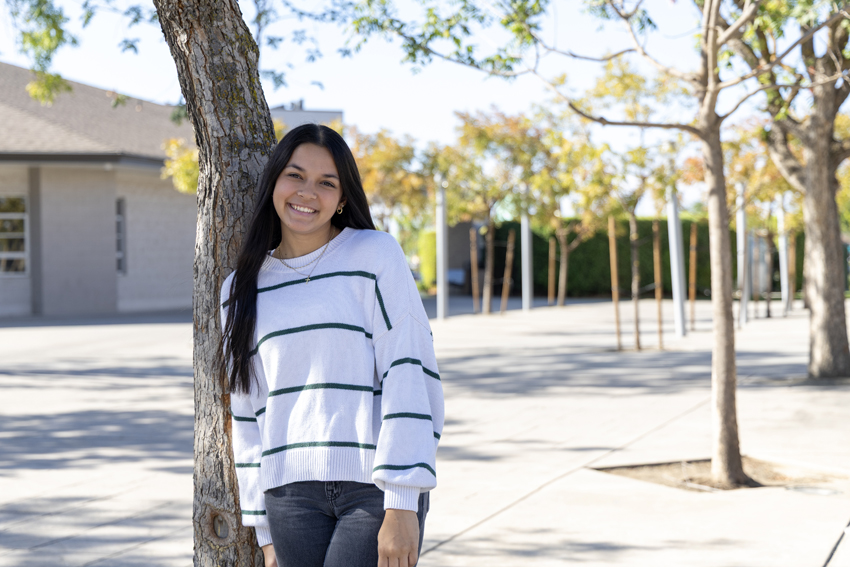The Strength PE classes and FC Barbell Club participated in the first ever FC Strength Lifting Meet recently. It was an opportunity for the students to approach lifting weights in a competitive situation. Competitive weight lifting has existed for centuries, if not milenia, in some form or other.

For example, in Northern Europe, particularly Great Britain and Scandinavia, many tribes had Stones of Strength competitions and rights of passage, in which men lifted a series of heavy stones to prove their prowess. Japan and the Basque culture also have ancient traditions of stone lifting.
That tradition of demonstrating strength by lifting heavy objects has continued to evolve. In modern times we have a variety of strength oriented sports including powerlifting, strength lifting, Crossfit Games™, Strongman, and American Ninja Warrior™ style events.
The FC Strength Meet is based on the strength lifting competition model which is very similar to competitive powerlifting. The main difference is in the selection of lifts performed in competition; powerlifting, which has existed as an organized competitive sport for many decades, tests the squat, deadlift and bench press, while strength lifting, as conducted by the USSF (United States Strengthlifting Federation) substitutes the overhead press for the bench.
Competitors perform each lift three times. The lifters are grouped by age, weight and gender. Winners are determined by totalling the weights of the lifters’ best completed attempt for each of the lifts. An overall best lifter, regardless of size, can be determined using a mathematical formula called the Wilks formula based on the lifter’s body weight.
The top performers in each lift and in each weight class earned t-shirts with the FC Barbell Club logo (you might see them around campus). Here are some of the highlights:
Highest total: Levi Sumbella 810.5 lbs.
Best Lifter (highest total compared to body weight using Wilks formula): Jonah Lozano 810 lbs.
Best lightweight lifter (under 150 lbs body weight): Andrew Rieker 705 lbs
Best middleweight lifter (151-174 lbs body weight): Jonah Lozano
Best heavyweight lifter (175-275 lbs body weight): Levi Sumbella
I asked a few of the athletes about different aspects of the competitive experience. Kyle Friesen is a senior who has been in the strength p.e. Class for three years. Jonah Lozano, also a senior has been in strength for three years; last year he received the p.e. department’s end of the year award for his work ethic and dedication to strength training. David Tuck is a freshman in his first year of strength p.e. Andrew Rieker is a sophomore who has been training for about 15 months; he was instrumental in starting the FC Barbell Club. Ben Vaipan, a junior, is also in his first year of strength and conditioning p.e. Here are the questions and the students’ responses:
What did you think of when you heard there would be a strength competition?
KF: “I was excited, competing and reaching maxes are always fun.”
JL: “I thought it was a great idea. I can see where I am in the competition and I think it’s healthy to have friendly competition.”
DT: “I didn’t really ever look forward to a competition. I’m relieved to have it over with.”
AR: “I was thoroughly excited and thrilled to see how far I could push myself and see how I well I performed compared to my numbers last year. I also wanted to see how I measured up compared to the other lifters in the strength and conditioning class. I Lift in the FC barbell club so I don’t see the other lifters and their numbers on a regular basis.”
BV: “I thought, ‘I’m going to lose!’ But it will be fun to see where I measure up compared to other lifters.”
How did you mentally prepare for the days of competition?
KF: “ I imagined the lifts.”
JL: “ Constantly remind myself about how hard I’ve worked and it’s now time for me to own my hard work and push some more weight.”
DT: “I told myself I’d do my best, because it is the effort that counts.”
AR: “I prepared by lifting harder each day before the competition. Mentally I pushed myself to go the extra step. I also ate more food to help myself build more muscle because I was burning more calories.”
BV: “Eat a lot, and lift what coach told me to lift.”

How did you prepare for each lift or attempt?”
KF: “I visualized success before I went.”
JL: “I prepared by listening to motivational music and getting it through my head that I’m going to lift the weight in front of me.”
DT: “Physical warm-ups and prayer”
AR: “I went in believing that I could finish each attempt. In the end every attempt I made I completed. While I missed one attempt [in the squat] due to a lack of depth I was still able to bring it back to the top.”
BV: “Hype music and hyping myself and of course, proper warm-up”
Did you have any specific goal weights that you wanted to lift in the meet?
KF: “Yes, I achieved my goal on deadlift but failed the others.”
JL: “My only goal in the meet was to have a squat that was 190 lbs above my body weight.”
AR: “I wanted to reach a three hundred deadlift but other than that I had no real idea of what I was able to do. I did, however, want to reach seven hundred pounds for all of my lifts combined which I ended up achieving.”
BV: “275 lb squat–yes!, 100 lb press–yes! 315 lb deadlift–yes!”
What do you think is the primary value of a strength competition?
KF: “Mental toughness is the primary value.”
DT: “If one maintains proper perspective about it, the focus on achievements and exceeding them.”
AR: The primary goal is to push yourself to see how far you can go. I also think that because of the competition element athletes perform better than if they compete by themselves. I think the second goal is to see how you match up compared to the competitors in your weight class or even above your weight class.
BV: “To see how you are doing in comparison to the others.”
Here is a link to the results of the FC Barbell Club Strength Lifting Meet 2018. Red cells indicate missed/failed attempts. Light blue cells indicate the highest weight achieved in the meet on a particular lift.
Competition can play an important role in motivating athletes to improve performance. Each person is unique in how he responds to the competitive environment or circumstances. However in general, when competition is involved, even when one only competes against oneself, the intensity level and focus are elevated and performance improves.
In addition, the experience of demonstrating the strength and realizing the benefit of the hours of training that led to it can have a profound effect on self-perception. Achieving one’s goals in competition can make one see oneself as a more functional human.
To read the latest blog: Functional Human Blog, No. 8- The Isolation Problem
To read the first blog: Functional Human Blog, No. 1







